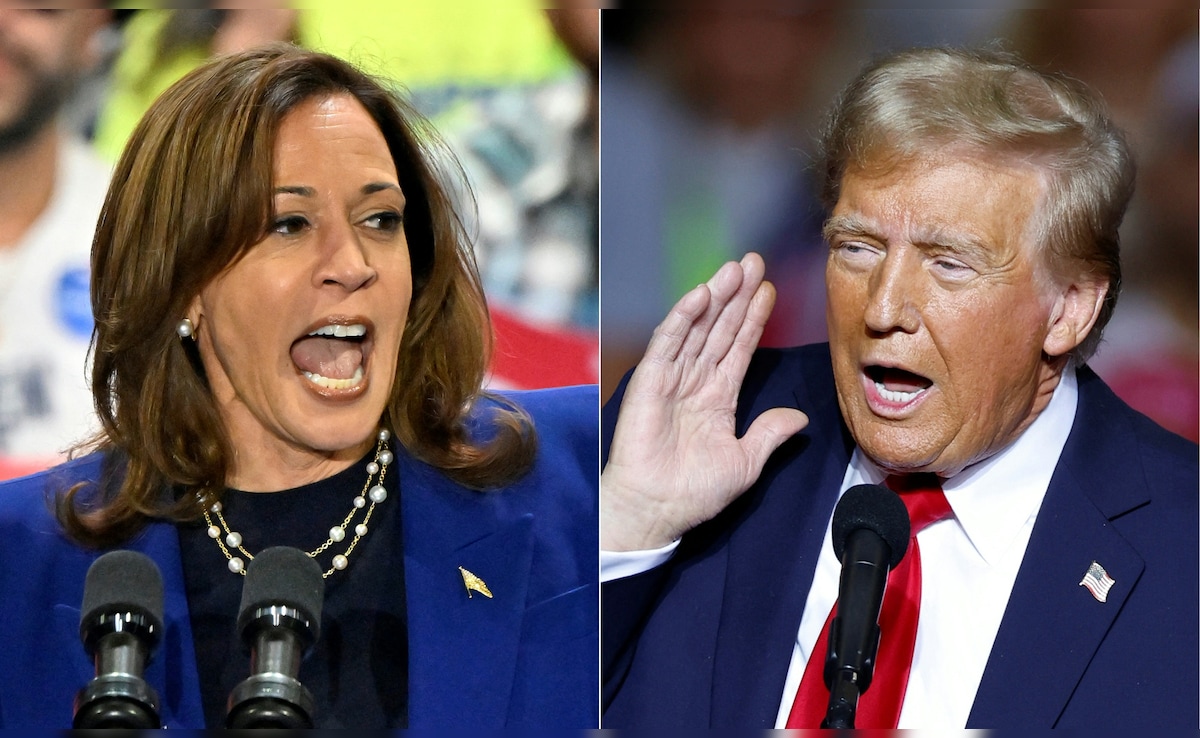2024-11-03 16:13:14

Washington:
“Swing states” – the elephant in the room is the major decider of the United States presidential election. Also known as battleground states, these states can make or break any candidate.
Historically speaking, in the United States, presidential elections are often shaped by three types of states: Red States, Blue States, and Swing States. Red States are those where Republicans have consistently won since 1980, while Blue States are where Democrats have dominated since 1992. These states are generally considered predictable in terms of their electoral outcomes.
However, Swing States are a different story altogether. Here, the battle between Republicans and Democrats is often extremely close, with winners prevailing by tiny margins. For instance, in the 2020 presidential election, Joe Biden won Arizona by just 10,000 votes.
Around 10 states have been considered swing states, but for the 2024 election, the key swing states to watch are Arizona, Georgia, Michigan, Nevada, North Carolina, Pennsylvania and Wisconsin.
Interestingly, candidates often focus their campaigns on these swing states, spending disproportionate amounts of time to win these states.
According to polls taken by YouGov till 31st October, Vice President Kamala Harris leads by small margins in Wisconsin (4 percentage points), Pennsylvania (+3), Michigan (+3), and Nevada (+1). Trump barely leads in North Carolina (+1) and Georgia (+1) and Arizona is tied.
Georgia
Biden’s 2020 victory marked the first Democratic win in Georgia since 1992. The state’s shifting demographics, particularly its growing diversity and expanding population of over 10 million, are expected to benefit Kamala Harris, who has actively courted minority voters. However, the 2024 election has revealed an unexpected trend: Vice President Kamala Harris is performing stronger in predominantly white states like Michigan and Wisconsin, while more diverse states are slightly favoring former President Donald Trump. This surprising dynamic is also evident in Georgia, highlighting a shift in traditional voting patterns.
Nevada
Nevada may hold the key to winning the presidential election, despite having only six electoral votes. Its diverse population, with 40% of eligible voters identifying as Latino, Black, or Asian American Pacific Islanders, could play a crucial role. Historically, these groups have shown stronger support for Kamala Harris than Donald Trump. However, economic concerns such as the rising cost of living, inflation, and immigration may shift the tide in Trump’s favor.
Michigan
Michigan, a state with 15 electoral votes, has traditionally been a Democratic stronghold, but Donald Trump’s 2016 win shook things up. His appeal to white working-class voters secured his victory, dealing a surprise blow to Hillary Clinton’s campaign. Fast forward to 2024, and Michigan’s diversity could give Kamala Harris an edge, particularly since it’s more diverse than other contested “blue wall” states. However, there is work involved when it comes to the Arab-American side of the state as they have expressed dissatisfaction with the way the war in Gaza has been handled by the Biden administration.
Pennsylvania
Pennsylvania, once a reliable Democratic stronghold, has become a fiercely contested battleground state. It has 19 electoral college votes and is the most coveted by both the parties. The state’s transformation is rooted in its economic challenges, particularly the decline of its industrial manufacturing base in “Rust Belt” cities like Philadelphia and Pittsburgh. This decline has left many residents seeking change and opportunity. Both Trump and Harris have frequently campaigned in the state, addressing key issues like infrastructure and manufacturing.
Arizona
Arizona was a nail-biter in the 2020 presidential election, with Biden securing a narrow victory of just 10,457 votes. Now, Trump is banking on voter dissatisfaction with the Biden-Harris administration’s immigration policies to turn the state red again. As Arizona shares a border with Mexico, immigration is a hot-button issue, and Trump hopes to capitalise on frustrations with the current administration.
North Carolina
North Carolina, once a reliable Republican stronghold in presidential elections, is now a toss-up state due to its rapidly shifting demographics. Historically, the state voted Republican for most of the last half-century, with the notable exception of Barack Obama’s win in 2008. However, the state’s population growth, particularly in the Research Triangle, has brought an influx of white, college-educated voters, Latinos, Asian Americans, and a significant Black population, making up about 1 in 5 voters.
Wisconsin
Trump considers Wisconsin winnable and has taken steps to demonstrate his commitment to the state. The Republican Party even held its national convention there over the summer. Initially, Trump held a lead against Biden, but Kamala Harris has since closed the gap, making the state a nail-biting contest.
Swing states,US elections,Donald Trump,Kamala Harris
Source link
7 total views , 1 views today
